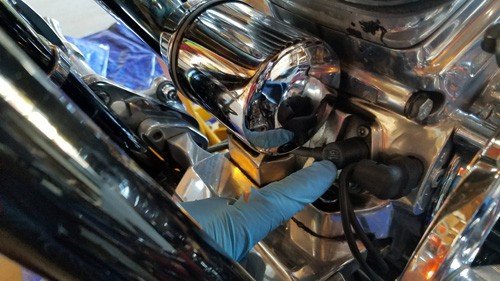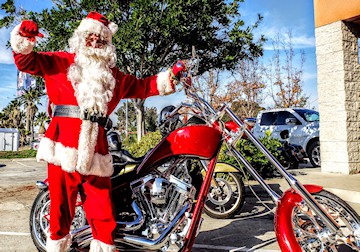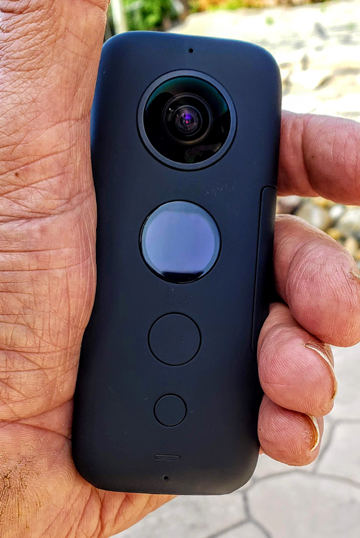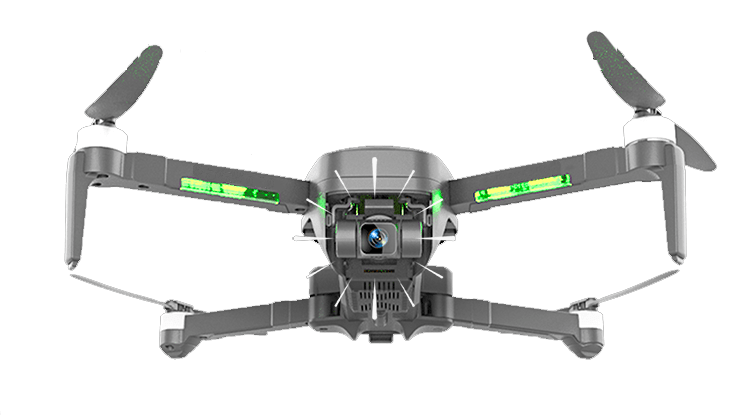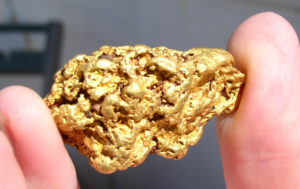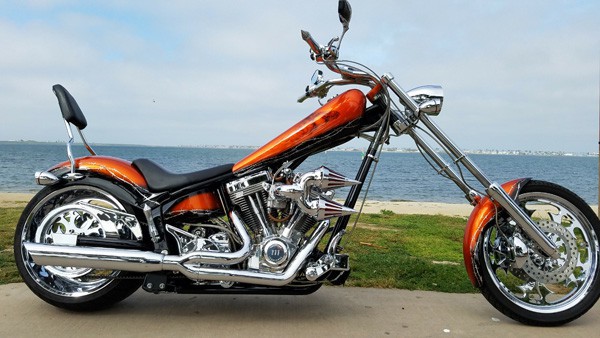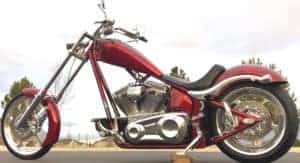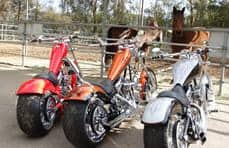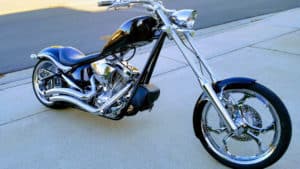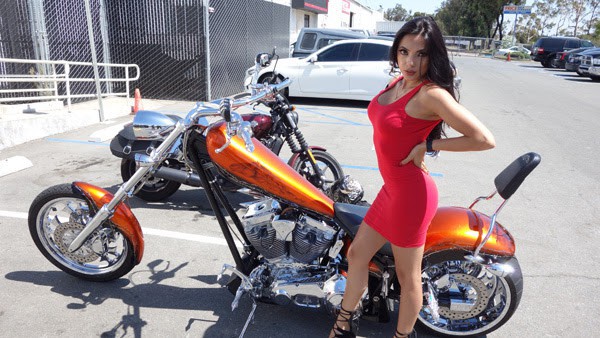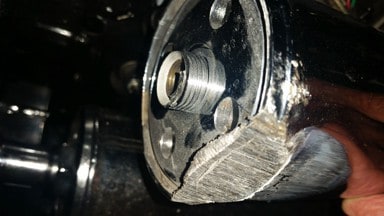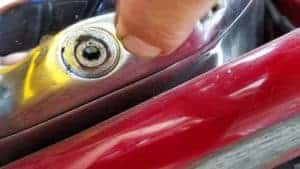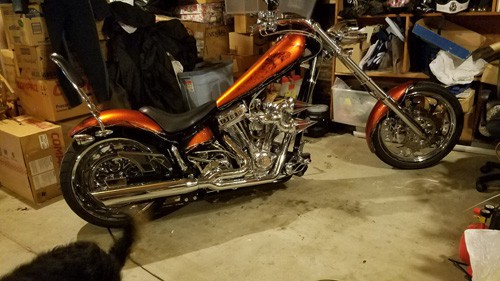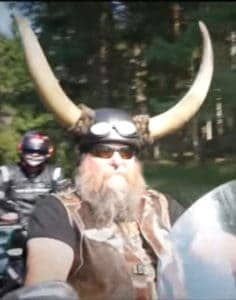Chopper Motorcycle Oil Change
Chopper Motorcycle Oil Change
Changing a motorcycle oil is perhaps one of the most important maintenance items that you can do. Plus, was many motorcycle dealers charging over $100 to do a complete oil change, learning to do it yourself is really a tremendous money saver. Every make and model of motorcycle, has different oil types and oil change intervals. In this video I’m working on my past American Ironhorse Texas Chopper. The basic oil change information shown in my video, with minor changes, is applicable for most motorcycles.
Before you start your oil change I’d recommend checking your owner’s manual for the manufacturer’s recommendation on when to change the oil, the amount of oil to use and the recommended oil type and weight
Chopper Motorcycle Oil Change
Personally, on all my bikes I always do a complete oil change that includes the filter and cleaning the tappet screen at 4,000 miles or once a season whichever comes first. Today, I pretty much use synthetic oil for the motor change, for the primary chain I use regular dinosaur oil. I should say here that every time I do an oil change, I also change the primary oil and check the transmission fluid. As far as changing the transmission oil, I do that at every other oil change.
From Wikipedia, the free encyclopedia:
Motor oil is a lubricant used in internal combustion engines, which power cars, motorcycles, lawnmowers, engine-generators, and many other machines. In engines, there are parts which move against each other, and the friction between the parts wastes otherwise useful power by converting kinetic energy into heat. It also wears away those parts, which could lead to lower efficiency and degradation of the engine. Proper lubrication decreases fuel consumption, decreases wasted power, and increases engine longevity.
Lubricating oil creates a separating film between surfaces of adjacent moving parts to minimize direct contact between them, decreasing frictional heat and reducing wear, thus protecting the engine. In use, motor oil transfers heat through conduction as it flows through the engine. In an engine with a recirculating oil pump, this heat is transferred by means of airflow over the exterior surface of the oil pan, airflow through an oil cooler, and through oil gases evacuated by the positive crankcase ventilation (PCV) system. While modern recirculating pumps are typically provided in passenger cars and other engines of similar or larger in size, total-loss oiling is a design option that remains popular in small and miniature engines.
In petrol (gasoline) engines, the top piston ring can expose the motor oil to temperatures of 160 °C (320 °F). In diesel engines, the top ring can expose the oil to temperatures over 315 °C (600 °F). Motor oils with higher viscosity indices thin less at these higher temperatures.
Coating metal parts with oil also keeps them from being exposed to oxygen, inhibiting oxidation at elevated operating temperatures preventing rust or corrosion. Corrosion inhibitors may also be added to the motor oil. Many motor oils also have detergents and dispersants added to help keep the engine clean and minimize oil sludge build-up. The oil is able to trap soot from combustion in itself, rather than leaving it deposited on the internal surfaces. It is a combination of this and some singeing that turns used oil black after some running.
Rubbing of metal engine parts inevitably produces some microscopic metallic particles from the wearing of the surfaces. Such particles could circulate in the oil and grind against moving parts, causing wear. Because particles accumulate in the oil, it is typically circulated through an oil filter to remove harmful particles. An oil pump, a vane or gear pump powered by the engine, pumps the oil throughout the engine, including the oil filter. Oil filters can be a full flow or bypass type.
In the crankcase of a vehicle engine, motor oil lubricates rotating or sliding surfaces between the crankshaft journal bearings (main bearings and big-end bearings) and rods connecting the pistons to the crankshaft. The oil collects in an oil pan, or sump, at the bottom of the crankcase. In some small engines such as lawn mower engines, dippers on the bottoms of connecting rods dip into the oil at the bottom and splash it around the crankcase as needed to lubricate parts inside. In modern vehicle engines, the oil pump takes oil from the oil pan and sends it through the oil filter into oil galleries, from which the oil lubricates the main bearings holding the crankshaft up at the main journals and camshaft bearings operating the valves. In typical modern vehicles, oil pressure-fed from the oil galleries to the main bearings enters holes in the main journals of the crankshaft.
Chopper Motorcycle Oil Change
++++++++++++
Best 360 degree camera for capturing your motorcycle rides
The Insta360 One X2 is the BEST camera for capturing your rides! Below is my affiliate link direct to the manufactures site for a very special deal: Insta360 One X2 special deal
+++++++++++++
Great DRONE Value
Visit our Youtube custom motorcycles channel.
Visit our sister site to view real gold nuggets and prospecting equipment:
https://www.california-gold-rush-miner.us
Be sure to view our Gold nuggets for sale.
View our Natural Silver specimens, Visit our Old West Collections & Unique & Unusual page


